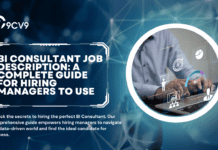Key Takeaways
- Compliance regulatory software automates and streamlines adherence to complex regulatory requirements, reducing organizational risk and improving efficiency.
- Key features include real-time monitoring, automated reporting, and seamless integration with existing business systems to ensure continuous compliance.
- Implementing the right software enhances transparency, supports proactive risk management, and prepares organizations for future regulatory challenges.
In today’s rapidly evolving regulatory landscape, organizations across industries are under increasing pressure to ensure compliance with an ever-growing list of legal, industry-specific, and internal governance requirements. Whether it involves adhering to data protection laws like GDPR, healthcare regulations such as HIPAA, financial reporting mandates like SOX, or international standards such as ISO 27001, businesses face significant challenges in maintaining consistent compliance. The consequences of non-compliance are not only costly but can also severely damage an organization’s reputation, operations, and stakeholder trust. This is where compliance regulatory software becomes an indispensable tool for modern enterprises.

Compliance regulatory software is a specialized technology solution designed to help businesses manage, monitor, and enforce compliance with various regulatory obligations. These platforms automate a wide range of tasks—such as risk assessments, audit tracking, policy management, and regulatory reporting—while providing real-time visibility into the organization’s compliance posture. By digitizing and streamlining complex compliance processes, this software reduces the risk of human error, enhances accountability, and ensures that compliance activities are carried out in accordance with both internal policies and external regulations.
As regulatory frameworks become more complex and enforcement becomes stricter across sectors like finance, healthcare, manufacturing, and energy, the demand for intelligent compliance solutions has surged. Manual compliance methods—such as spreadsheets, paper-based audits, and siloed documentation—are no longer sufficient in addressing the speed and sophistication of today’s regulatory requirements. Compliance regulatory software enables organizations to stay ahead of these challenges by centralizing data, automating workflows, and facilitating proactive compliance management.
Furthermore, this type of software not only mitigates the risk of regulatory breaches but also plays a critical role in improving operational efficiency, reducing the cost of compliance, and fostering a culture of corporate integrity. It empowers compliance officers, auditors, risk managers, and executive teams with actionable insights through advanced dashboards and customizable reporting tools, ensuring transparency and responsiveness throughout the organization.
This comprehensive guide explores in detail what compliance regulatory software is, how it functions, its key features, and the benefits it delivers. It also examines the industries that rely most heavily on these solutions, discusses implementation considerations, and outlines emerging trends shaping the future of compliance technology. Whether your organization is navigating local regulatory requirements or striving for global compliance across jurisdictions, understanding how compliance regulatory software works is essential for sustainable success in an increasingly regulated world.
Before we venture further into this article, we would like to share who we are and what we do.
About 9cv9
9cv9 is a business tech startup based in Singapore and Asia, with a strong presence all over the world.
With over nine years of startup and business experience, and being highly involved in connecting with thousands of companies and startups, the 9cv9 team has listed some important learning points in this overview of What is Compliance Regulatory Software and How It Works.
If your company needs recruitment and headhunting services to hire top-quality employees, you can use 9cv9 headhunting and recruitment services to hire top talents and candidates. Find out more here, or send over an email to [email protected].
Or just post 1 free job posting here at 9cv9 Hiring Portal in under 10 minutes.
What is Compliance Regulatory Software and How It Works
- What is Compliance Regulatory Software and How It Works
- Key Features of Compliance Regulatory Software
- How Compliance Regulatory Software Works
- Benefits of Using Compliance Regulatory Software
- Challenges and Considerations When Implementing Compliance Software
- Choosing the Right Compliance Software for Your Organization
- Future Trends in Compliance Regulatory Software
1. What is Compliance Regulatory Software and How It Works
Compliance regulatory software is an advanced digital solution designed to help organizations ensure adherence to legal, regulatory, industry, and internal policy requirements. It automates, streamlines, and monitors compliance activities across departments, reducing the risk of human error, non-compliance penalties, and operational inefficiencies.
What Does Compliance Regulatory Software Do?
Core Functions and Objectives:
- Centralizes regulatory documentation in one secure, searchable platform
- Monitors compliance activities in real-time across various operational units
- Automates workflows related to audits, inspections, and approvals
- Manages policy creation and distribution to employees and stakeholders
- Tracks regulatory changes and alerts relevant personnel
- Reduces compliance risk through consistent enforcement of rules and policies
Key Capabilities of Compliance Regulatory Software
1. Real-Time Compliance Monitoring
- Tracks internal and external compliance metrics continuously
- Alerts users to potential violations or gaps in compliance
- Integrates with existing enterprise systems (ERP, CRM, HRM) for data consistency
2. Automated Audit Trails
- Logs user actions and changes automatically
- Enables full transparency and traceability
- Ensures readiness for external audits or regulatory reviews
3. Regulatory Change Management
- Monitors updates from regulatory bodies (e.g., SEC, GDPR regulators, HIPAA authorities)
- Notifies compliance teams of new or modified obligations
- Updates internal controls and policies accordingly
4. Document & Policy Management
- Stores, organizes, and updates compliance policies centrally
- Supports version control to ensure the latest documents are in use
- Assigns policies to employees with read/acknowledge tracking
5. Role-Based Access and User Permissions
- Restricts sensitive compliance data to authorized personnel
- Supports internal accountability and minimizes risk of data misuse
Key Industries Using Compliance Regulatory Software
1. Financial Services
- Ensures adherence to anti-money laundering (AML), Know Your Customer (KYC), and SOX requirements
- Example: NAVEX Global helps banks manage financial reporting compliance and risk assessment
2. Healthcare and Pharmaceuticals
- Assists with HIPAA, FDA, and GxP compliance
- Example: MasterControl is widely used in life sciences to manage FDA 21 CFR Part 11 regulations
3. Manufacturing
- Supports ISO standards compliance, occupational safety (OSHA), and environmental regulations
- Example: Sparta Systems’ TrackWise manages quality and regulatory compliance across production sites
4. Energy and Utilities
- Manages environmental, health, and safety (EHS) compliance
- Ensures reporting for government and industry bodies such as FERC and NERC
5. Government and Education
- Tracks compliance with data protection laws and institutional policies
- Ensures grant management and reporting accuracy
Types of Compliance Regulations Addressed
| Regulation | Industry Focus | Software Example |
|---|---|---|
| GDPR | Data Privacy | OneTrust, LogicGate |
| HIPAA | Healthcare | ComplyAssistant, ZenQMS |
| SOX | Finance | AuditBoard, Workiva |
| PCI-DSS | Retail, E-Commerce | Secureframe, Vanta |
| ISO 27001 / 9001 | Cross-Industry | Qualsys, MetricStream |
| OSHA | Manufacturing, Energy | Intelex, SAI360 |
Why Manual Compliance Methods Are No Longer Sufficient
Challenges of Traditional Compliance Management:
- Reliance on spreadsheets or emails for tracking
- Disconnected documentation across departments
- High risk of missed deadlines and outdated policies
- Difficult to demonstrate proof of compliance during audits
How Software Solves These Issues:
- Offers centralized and up-to-date access to all records
- Automates notifications and task assignments
- Generates audit-ready reports in seconds
- Provides secure cloud-based or on-premise solutions
Chart: Manual vs. Software-Based Compliance Management
| Criteria | Manual Methods | Compliance Software |
|---|---|---|
| Accuracy | Prone to human error | Highly accurate, automated |
| Real-time Monitoring | Not available | Built-in and continuous |
| Regulatory Updates | Manual research required | Automated tracking and alerts |
| Audit Preparation | Time-consuming | Instant reports and audit trails |
| Collaboration | Fragmented across teams | Centralized dashboard and tasks |
| Scalability | Limited | Easily scalable across regions |
Conclusion of Section
Compliance regulatory software serves as a mission-critical tool in today’s compliance-first business environment. It empowers organizations not only to remain legally compliant, but also to build resilience, accountability, and operational excellence. By automating compliance activities and centralizing data, businesses reduce the burden on compliance teams while enhancing overall governance.
2. Key Features of Compliance Regulatory Software
Compliance regulatory software comes equipped with a comprehensive suite of features designed to manage legal obligations, mitigate risk, and ensure regulatory adherence across departments. These functionalities are often modular, scalable, and configurable to support industry-specific compliance frameworks, whether local, national, or international.
1. Automated Policy Management
What It Does:
- Centralizes creation, storage, approval, and distribution of compliance policies
- Ensures document version control with audit trails and edit tracking
- Assigns policies to departments or individuals for acknowledgment and training
Benefits:
- Reduces manual policy distribution errors
- Ensures employees access only the most current policies
- Facilitates faster policy rollouts across global teams
Example:
- PowerDMS offers advanced policy management tools tailored to highly regulated sectors such as healthcare, law enforcement, and government.
2. Real-Time Risk Assessment and Mitigation
What It Does:
- Identifies, categorizes, and ranks compliance risks based on likelihood and impact
- Maps risks to regulatory controls and business processes
- Provides visual risk dashboards and heat maps for quick decision-making
Benefits:
- Enhances proactive risk detection
- Enables real-time remediation planning
- Reduces exposure to penalties and reputational harm
Example:
- LogicGate Risk Cloud integrates risk scoring models with compliance monitoring, making it easier to automate risk evaluations.
3. Regulatory Change Management
What It Does:
- Monitors global regulatory databases for updates, amendments, and new obligations
- Notifies compliance officers and affected departments
- Links changes to existing policies, controls, and processes
Benefits:
- Keeps the organization aligned with shifting regulatory landscapes
- Reduces the manual burden of researching changes
- Minimizes risk of outdated compliance practices
Example:
- Thomson Reuters Regulatory Intelligence integrates seamlessly with compliance software to track thousands of regulators worldwide.
4. Workflow Automation and Task Management
What It Does:
- Automates the assignment of compliance-related tasks to responsible individuals
- Tracks task progress, due dates, and completion status
- Enables multi-step approval workflows for audits, controls, and policy rollouts
Benefits:
- Improves accountability across departments
- Increases workflow transparency and audit-readiness
- Reduces administrative workload
Example:
- MetricStream allows users to design customizable workflows for compliance approvals, certifications, and validations.
5. Centralized Audit Management
What It Does:
- Plans, schedules, and tracks internal and external audits
- Provides standardized templates for audit documentation
- Generates reports, findings, and action plans for remediation
Benefits:
- Ensures audits are consistently executed
- Accelerates audit preparation and reporting cycles
- Provides clear documentation for regulatory reviews
Example:
- AuditBoard offers specialized features for SOX compliance, internal audits, and enterprise risk audits.
6. Incident and Case Management
What It Does:
- Logs and tracks compliance incidents, breaches, and investigations
- Enables whistleblower reporting channels and investigation follow-ups
- Provides tools for remediation planning and enforcement tracking
Benefits:
- Supports ethical practices and whistleblower protection
- Enhances root cause analysis and corrective actions
- Strengthens organizational integrity
Example:
- NAVEX EthicsPoint is widely used for anonymous reporting and case lifecycle management in compliance-sensitive industries.
7. Compliance Reporting and Dashboards
What It Does:
- Consolidates compliance KPIs, audit findings, risk ratings, and policy updates into one dashboard
- Offers real-time compliance scorecards and analytics
- Supports exportable reports for regulatory bodies or executive review
Benefits:
- Improves visibility into compliance posture
- Enables quick identification of high-risk areas
- Supports data-driven compliance strategies
Example:
- Onspring provides customizable dashboards for GRC (governance, risk, and compliance) metrics and executive insights.
8. Integration with Existing Systems
What It Does:
- Integrates with HR systems, ERP, CRM, and document management platforms
- Synchronizes employee data, policy assignments, and audit trails across systems
- Enables seamless workflows and consistent data usage
Benefits:
- Eliminates data silos
- Enhances efficiency by reducing manual re-entry
- Enables broader compliance automation across business units
Example:
- SAI360 offers connectors for Salesforce, SAP, Microsoft 365, and more, allowing compliance workflows to integrate into daily operations.
9. Role-Based Access and Security Controls
What It Does:
- Restricts access to sensitive compliance data based on job roles or departments
- Supports multifactor authentication and user activity logging
- Ensures compliance with internal data protection policies and global standards (e.g., GDPR)
Benefits:
- Minimizes data misuse and unauthorized access
- Enhances cybersecurity posture
- Supports audit and regulatory requirements for access control
Feature Comparison Table: Popular Compliance Regulatory Software
| Feature | LogicGate | NAVEX | AuditBoard | PowerDMS | SAI360 |
|---|---|---|---|---|---|
| Policy Management | ✅ | ✅ | ⚠️ Limited | ✅ | ✅ |
| Risk Assessment & Scoring | ✅ | ✅ | ✅ | ⚠️ Limited | ✅ |
| Workflow Automation | ✅ | ✅ | ✅ | ⚠️ Limited | ✅ |
| Audit Management | ✅ | ✅ | ✅ | ⚠️ Limited | ✅ |
| Regulatory Intelligence | ⚠️ Limited | ✅ | ⚠️ Limited | ❌ | ✅ |
| Integration Capabilities | ✅ | ✅ | ✅ | ⚠️ Limited | ✅ |
| Whistleblower Case Handling | ⚠️ Add-on | ✅ | ❌ | ❌ | ✅ |
| Custom Dashboards & Reporting | ✅ | ✅ | ✅ | ⚠️ Limited | ✅ |
Conclusion of Section
The key features of compliance regulatory software go far beyond simple policy tracking—they offer a robust ecosystem that proactively manages regulatory risks, automates critical processes, and ensures total auditability across the organization. With capabilities like real-time dashboards, automated workflows, and risk-based decision-making tools, these platforms are indispensable in today’s high-stakes compliance environment.
3. How Compliance Regulatory Software Works
Compliance regulatory software functions as an integrated digital ecosystem that streamlines, automates, and centralizes regulatory governance, risk mitigation, and audit management. These systems are typically built on modular and scalable architectures, enabling organizations to tailor functionalities based on regulatory needs, industry frameworks, and internal policy structures.
1. System Architecture and Core Components
Modular Design
- Built with independent yet interoperable modules (e.g., policy management, risk assessments, audit management)
- Enables organizations to scale the system as their compliance needs evolve
- Supports plug-and-play functionality across departments
Cloud-Based or On-Premise Deployment
- Cloud-based platforms offer real-time updates, remote access, and lower maintenance
- On-premise installations may be preferred for sensitive industries (e.g., defense, financial institutions)
Microservices Architecture
- Separates functionalities into smaller, maintainable services
- Enhances performance, reduces system downtime, and simplifies updates
2. Data Integration and System Connectivity
How Integration Works:
- API connectors link compliance software to external systems like:
- HR software (e.g., Workday)
- ERP platforms (e.g., SAP, Oracle)
- Document management systems (e.g., SharePoint)
- Legal databases (e.g., LexisNexis, Thomson Reuters)
Purpose of Integration:
- Automates data exchange (e.g., employee roles and access control)
- Eliminates duplication of effort and ensures accuracy
- Enables enterprise-wide visibility of compliance activities
Example:
- SAI360 offers pre-built integrations for Salesforce, SAP, and Microsoft Azure, ensuring synchronized compliance operations across the organization.
3. Policy Lifecycle Management
Automation Workflow:
- Drafting → Review → Approval → Distribution → Employee Acknowledgment → Versioning
Key Functions:
- Auto-notifications for pending reviews or acknowledgments
- Digital signatures and tracking of policy reads
- Centralized repository for storing historical versions and change logs
Example:
- PowerDMS allows organizations to track employee acknowledgment rates and automatically send reminders to those who haven’t confirmed receipt of updated policies.
4. Risk Identification and Scoring Mechanism
Process Flow:
- Internal audits or regulatory monitoring identify potential compliance risks
- Risks are categorized and scored based on:
- Impact (High/Medium/Low)
- Likelihood (Frequent/Occasional/Rare)
Risk Heat Map Example:
| Risk Category | Likelihood | Impact | Risk Score | Priority |
|---|---|---|---|---|
| GDPR Non-Compliance | Frequent | High | 90 | Critical |
| Late Filing | Occasional | Medium | 60 | High |
| Data Entry Errors | Frequent | Low | 30 | Medium |
| Vendor Negligence | Rare | High | 40 | Medium |
Automation:
- Risks are mapped to existing policies or controls
- Real-time alerts and dashboards help in prioritization and remediation
Example:
- LogicGate Risk Cloud enables users to build dynamic risk matrices that automatically update based on internal data inputs.
5. Regulatory Intelligence Monitoring
How It Works:
- Compliance software pulls data from global regulatory feeds and legal databases
- Uses AI or rules-based engines to flag:
- New regulations
- Amendments to existing laws
- Expiring licenses or certifications
Automated Alerts:
- Compliance teams receive email alerts or dashboard pop-ups
- Regulatory updates are automatically linked to impacted controls or policies
Example:
- Thomson Reuters Regulatory Intelligence integrates with compliance platforms to monitor 1,000+ regulators globally in real time.
6. Workflow Automation and Process Mapping
Features:
- Drag-and-drop workflow builder to design custom compliance processes
- Assigns tasks to appropriate stakeholders with built-in SLAs
- Escalation rules for overdue or non-compliant actions
Process Example: New Regulation Impact Assessment
| Step | Responsible Party | System Trigger | Expected Output |
|---|---|---|---|
| Identify New Regulation | Regulatory Team | Data Feed from Legal Source | Compliance Alert Created |
| Assess Impact | Risk & Legal Team | Workflow Trigger | Risk Score and Controls Updated |
| Policy Review | Policy Owner | Task Assignment Notification | Updated Policy Drafted |
| Approval & Rollout | Compliance Officer | Email Alert | Policy Published and Acknowledged |
Example:
- MetricStream offers a visual workflow engine to automate and track regulation-to-policy mapping, reducing manual oversight.
7. Incident Management and Case Resolution
Automated Incident Handling Process:
- Incident logged manually or via whistleblower portal
- Categorization engine identifies severity and urgency
- Task routing to investigative team
- Root cause analysis and corrective action plan generated
Case Management Dashboards Include:
- Status (Open/In Progress/Resolved)
- Assigned Investigator
- SLA Timelines
- Audit History
Example:
- NAVEX EthicsPoint provides anonymous reporting portals, automated routing, and real-time case resolution metrics for ethics and compliance teams.
8. Audit Trails and Compliance Reporting
Audit Trail Functions:
- Every change, update, and user action is time-stamped and recorded
- Supports defensible compliance posture during regulatory inspections
- Enables forensic analysis in the event of non-compliance
Reporting Capabilities:
- Exportable reports in PDF, XLS, and XML formats
- Visual dashboards for compliance KPIs
- Custom reports by region, department, regulation type, etc.
Example:
- AuditBoard allows real-time generation of compliance reports for executives and auditors, simplifying audit preparation.
9. Machine Learning and Predictive Analytics
Emerging Capabilities:
- Predictive models identify potential areas of non-compliance before they occur
- Natural language processing (NLP) extracts actionable insights from regulatory documents
- Trend analysis across departments or locations
Benefits:
- Enables forward-looking compliance strategies
- Reduces dependency on reactive compliance measures
- Increases automation intelligence over time
Example:
- CURA Software leverages AI and ML algorithms to help enterprises predict future compliance risks and optimize control effectiveness.
Summary Chart: Key Operational Layers of Compliance Software
| Operational Layer | Functionality | Example Tools |
|---|---|---|
| Data Ingestion & Integration | Pulls internal and regulatory data for processing | SAI360, Workiva |
| Policy and Control Engine | Manages policy lifecycle and risk-control mappings | PowerDMS, LogicGate |
| Workflow Orchestration | Automates compliance tasks and approvals | MetricStream, Resolver |
| Case & Incident Management | Handles whistleblower reports and investigations | NAVEX, i-Sight |
| Analytics and Reporting | Visual dashboards, scorecards, and audit trails | AuditBoard, Onspring |
| AI/ML Predictive Layer | Future-focused insights, risk detection, and NLP capabilities | CURA, LogicManager |
Conclusion of Section
Understanding how compliance regulatory software works reveals its value as a comprehensive framework that automates complex legal and regulatory processes. From data integration and workflow automation to real-time regulatory monitoring and AI-powered analytics, this software serves as the backbone of modern compliance management. Organizations leveraging these platforms benefit from improved transparency, reduced risk exposure, and operational efficiency.
4. Benefits of Using Compliance Regulatory Software
Compliance regulatory software provides significant strategic, operational, and financial benefits to organizations operating in increasingly regulated industries. These systems offer automation, visibility, risk reduction, and real-time control across compliance frameworks, ensuring adherence to laws, industry standards, and internal policies.
1. Enhanced Regulatory Compliance and Risk Reduction
Improved Adherence to Laws and Standards
- Ensures compliance with regional and global regulations (e.g., GDPR, HIPAA, SOX, PCI-DSS, ISO 27001)
- Helps monitor regulatory changes and assess their business impact
- Reduces legal penalties and reputational damage
Real-Time Risk Identification
- Constant surveillance of operations against compliance metrics
- Risk scoring and categorization enable focused mitigation
- AI-based alerts predict compliance breaches before they escalate
Example:
- NAVEX Global allows real-time monitoring of regulatory updates, enabling clients to reduce the risk of non-compliance by up to 45%.
2. Automation of Manual Compliance Processes
Time and Resource Efficiency
- Automates policy updates, employee certifications, document control, and audit management
- Minimizes manual entries and paperwork
- Frees up compliance teams for strategic tasks
Workflow Streamlining
- Centralized workflows reduce approval delays and miscommunication
- Eliminates human error in repetitive compliance activities
Example:
- MetricStream reduces the average compliance process cycle time by 30–50% through automation and intelligent routing.
3. Centralized Compliance Data Management
Unified Data Repository
- Stores policies, controls, audit logs, incident reports, and licenses in one platform
- Offers version control and secure access management
Improved Data Accuracy
- Integrations with HR, ERP, and legal systems reduce data silos
- Ensures uniformity and consistency across departments
Example:
- Workiva allows enterprise-wide collaboration on compliance documentation within a centralized, cloud-based platform.
4. Real-Time Visibility and Transparency
Dashboards and Visual Reports
- Provide executive-level insights into compliance performance
- Display real-time KPIs, risk scores, policy status, and incident metrics
Audit Readiness
- Keeps audit trails up to date and instantly accessible
- Simplifies internal or third-party audit processes
Example Dashboard: Compliance Overview
| Metric | Value | Status |
|---|---|---|
| Policies Reviewed This Quarter | 34 | On Track |
| Open Compliance Issues | 6 | High Priority |
| Employee Acknowledgment Rate | 92% | Healthy |
| Regulatory Changes Tracked | 45 | Updated |
Example:
- AuditBoard provides customizable compliance dashboards that enhance transparency across risk, audit, and compliance teams.
5. Proactive Regulatory Change Management
Automated Regulatory Monitoring
- Tracks changes from thousands of global and local regulators
- Maps changes directly to policies, controls, and operational processes
Faster Adaptation to Legal Updates
- Minimizes lag between regulation release and policy alignment
- Avoids missed deadlines and non-compliance
Example:
- Thomson Reuters Regulatory Intelligence automatically notifies financial institutions of rule changes from over 1,000 global regulators.
6. Cost Reduction and Financial Efficiency
Lower Operational Costs
- Reduces dependency on manual labor for compliance monitoring
- Saves on penalties, legal consultations, and audit preparations
Improved ROI
- Investment in software translates to long-term savings
- Scalable models reduce costs as the organization grows
Cost Benefit Comparison Table
| Cost Category | Without Software | With Compliance Software | Estimated Savings (%) |
|---|---|---|---|
| Manual Compliance Audits | $20,000/year | $5,000/year | 75% |
| Legal Consultation Fees | $12,000/year | $4,000/year | 66% |
| Non-Compliance Fines | $50,000+ risk | <$5,000 (rare) | 90%+ |
| Admin & Document Handling | $15,000/year | $3,000/year | 80% |
7. Improved Employee Accountability and Training
Policy Acknowledgment Tracking
- Tracks which employees have reviewed and acknowledged policies
- Sends automated reminders for overdue actions
Integrated Training Modules
- Offers compliance e-learning and certifications
- Ensures upskilling of staff on evolving regulations
Example:
- PowerDMS enables organizations to track training completion and policy acknowledgment rates in real time, ensuring compliance at the individual level.
8. Better Vendor and Third-Party Compliance
Vendor Risk Management Tools
- Assesses third-party risks based on their access and operational role
- Onboards vendors through automated compliance assessments
Contract and SLA Tracking
- Monitors expiration, performance, and compliance clauses
- Sends alerts for renewals, audits, or violations
Example:
- LogicManager helps organizations score and manage vendor risks through customizable third-party compliance assessments.
9. Enhanced Audit Readiness and Documentation
Instant Access to Audit Trails
- Prepares organizations for internal and regulatory audits at any time
- Reduces stress and effort in compiling evidence or documentation
Audit History and Reporting
- Maintains immutable logs of user activity, control changes, and compliance reports
- Supports full traceability for every compliance event
Example:
- Onspring provides audit-ready compliance reports and real-time alerts that reduce audit preparation time by 60%.
10. Scalability Across Departments and Geographies
Multi-Entity Compliance
- Supports compliance efforts across various departments, business units, and international branches
- Localized configurations allow alignment with country-specific laws
Cloud Scalability
- Grows with the organization, accommodating new users, processes, and data without performance degradation
Example:
- SAI360 supports multilingual compliance environments and scales easily for multinational corporations with diversified regulatory needs.
Summary Table: Top Benefits of Compliance Regulatory Software
| Benefit Area | Impact | Example Tools |
|---|---|---|
| Regulatory Compliance | Avoids penalties, ensures legal alignment | NAVEX Global, Workiva |
| Process Automation | Reduces manual workload, increases accuracy | MetricStream, PowerDMS |
| Centralized Data | Improves data integrity and traceability | Workiva, LogicManager |
| Real-Time Monitoring | Enables fast response to violations or changes | AuditBoard, Thomson Reuters |
| Financial Efficiency | Cuts audit, legal, and operational costs | Onspring, SAI360 |
| Employee Accountability | Boosts policy understanding and training compliance | PowerDMS, NAVEX |
| Vendor Risk Management | Assesses and monitors third-party compliance | LogicManager, Resolver |
| Scalable Deployment | Adapts to organization growth and jurisdictional needs | SAI360, Workiva |
Conclusion of Section
The benefits of using compliance regulatory software span far beyond basic legal adherence. From automating compliance workflows and reducing operational risks to enhancing transparency, streamlining audits, and scaling across global operations, these platforms are pivotal in modern corporate governance. As regulations become more complex and enforcement more aggressive, investing in compliance software becomes a strategic imperative that delivers measurable value across the organization.
5. Challenges and Considerations When Implementing Compliance Software
While compliance regulatory software offers transformative benefits for managing risk and regulatory requirements, implementing such systems presents a range of challenges and strategic considerations. Organizations must address these complexities to ensure successful deployment, user adoption, and long-term value.
1. High Initial Costs and ROI Concerns
Implementation Costs
- Licensing fees, infrastructure upgrades, and professional services can significantly raise upfront costs
- Integration with legacy systems often adds hidden expenses
- Budget constraints in SMEs may delay or limit full-scale deployment
Return on Investment (ROI) Uncertainty
- Measuring the financial ROI of compliance software is not always straightforward
- Benefits are often indirect, such as avoided fines or enhanced reputation
Example:
- A mid-sized financial firm reported an implementation budget overrun of 25% due to unforeseen customization and consulting needs during integration.
Cost Breakdown Table
| Cost Component | Estimated Range |
|---|---|
| Software License (Annual) | $20,000 – $250,000+ |
| Custom Integrations | $10,000 – $100,000+ |
| Staff Training & Onboarding | $5,000 – $50,000 |
| Maintenance & Support (Yearly) | 15–25% of license fee |
2. Integration With Existing Systems
Legacy System Compatibility
- Older IT environments may lack APIs or modern data formats required for seamless integration
- Mismatched data structures can lead to errors or incomplete compliance reporting
Data Silos
- Isolated departments may store compliance-relevant data in non-standard formats
- Manual reconciliation between platforms increases workload and risks
Example:
- A healthcare provider using outdated EHR software faced major challenges integrating with a modern HIPAA compliance platform due to incompatible data protocols.
3. User Adoption and Training Requirements
Low Internal Engagement
- Employees may view compliance tools as burdensome or overly complex
- Resistance to change can reduce system effectiveness
Training Overheads
- Compliance teams and general staff require training on new workflows
- Continuous updates to regulations necessitate ongoing learning
User Adoption Checklist
| Training Area | Target Audience | Training Frequency |
|---|---|---|
| System Navigation | Compliance Team | Initial + Quarterly |
| Policy Acknowledgment Process | All Employees | Initial + Annually |
| Reporting and Escalation Tools | Risk and Legal Teams | Bi-Annual |
| Regulatory Change Alerts | Management | As Required |
Example:
- A global logistics firm had only a 40% adoption rate after 3 months of rollout due to inadequate onboarding and unclear user instructions.
4. Regulatory Complexity and Software Limitations
Coverage Gaps
- Not all platforms are equipped to handle multi-jurisdictional laws or industry-specific mandates
- Some solutions focus narrowly (e.g., only on financial compliance or data privacy), requiring multiple tools
Frequent Regulatory Changes
- High-paced changes in global regulations (e.g., ESG laws, data privacy) can outpace software updates
- Manual interpretation is still often required for legal nuances
Example:
- A SaaS company with clients in the EU, US, and Asia had to use three separate compliance tools to meet GDPR, CCPA, and PIPL standards.
5. Data Security and Privacy Concerns
Sensitive Data Exposure
- Compliance systems store personal, financial, and operational data that are high-value targets for cyberattacks
- Misconfigured access permissions can lead to insider threats
Cloud Security Considerations
- Organizations must assess if cloud-hosted platforms meet required security certifications (e.g., ISO 27001, SOC 2)
Example:
- In 2022, a compliance software vendor experienced a breach due to improper API authentication, exposing client audit data.
6. Customization and Scalability Challenges
One-Size-Fits-All Limitation
- Pre-built templates and workflows may not suit every organization’s processes
- Over-customization raises maintenance complexity and future migration risks
Scalability Bottlenecks
- Some solutions perform poorly as user count or data volume grows
- Licensing models may penalize scale (e.g., per-user or per-module pricing)
Example:
- A growing fintech company had to re-implement its compliance solution after it could no longer support simultaneous audits across regions.
7. Compliance Ownership and Governance Issues
Unclear Responsibility
- In decentralized organizations, compliance duties are spread across departments with varying levels of accountability
- No clear system ownership leads to tool underutilization
Governance Framework Confusion
- Lack of documented workflows, policies, and escalation paths can render software ineffective
- Inconsistent data classification and control mapping hinder reporting accuracy
Example:
- A manufacturing enterprise failed to pass an ISO 27001 audit because its compliance software wasn’t linked to an accountable governance framework.
8. Vendor Lock-In and Long-Term Flexibility
Dependency on Vendors
- Organizations may become too reliant on a vendor’s platform, updates, and integrations
- Exit costs can be high if migrating to another solution later
Limited Custom Control
- Some SaaS platforms restrict backend access, customization, or advanced analytics
- Platform upgrades may impact custom configurations
Vendor Lock-In Risk Matrix
| Factor | Risk Level | Mitigation |
|---|---|---|
| Proprietary Data Formats | High | Demand open or exportable formats |
| API Access Restrictions | Medium | Require full integration support |
| Contract Length and Termination | High | Negotiate flexible SLAs |
| Update Compatibility Issues | Medium | Test environments before upgrade |
9. Performance Monitoring and Reporting Complexity
Real-Time Accuracy
- Discrepancies in real-time monitoring can occur due to slow data sync or latency
- False positives in alerts may overwhelm compliance teams
Complex Reporting Structures
- Multi-layered compliance reports require cross-functional data validation
- Automated reports may miss contextual information needed for audits
Example:
- A global retailer using automated compliance alerts received over 1,200 notifications in one quarter, most of which were low-risk false positives.
10. Legal and Ethical Compliance Considerations
Ethical Use of Monitoring Tools
- Excessive surveillance of employees via compliance tools may breach data ethics or privacy norms
- Misuse can lead to employee dissatisfaction and potential legal action
Cross-Border Data Handling
- Compliance software handling data across borders must align with data sovereignty laws (e.g., GDPR, LGPD, PDPA)
Example:
- A US-based company storing EU employee data in non-EU data centers via compliance software was flagged under GDPR for non-conformity.
Summary Table: Key Implementation Challenges
| Challenge Area | Impact | Example |
|---|---|---|
| Initial & Ongoing Costs | Budget overruns, uncertain ROI | Financial firm with 25% overrun |
| System Integration | Compatibility issues with legacy IT | Healthcare firm unable to sync EHR |
| User Training | Low engagement, slow adoption | 40% usage post-rollout |
| Regulation Complexity | Gaps in coverage across jurisdictions | SaaS firm using 3 platforms |
| Data Security | High-value data exposure risks | Vendor breach due to API mismanagement |
| Scalability | Tool limitations for growing enterprises | Fintech firm forced to migrate |
| Governance Framework | Undefined ownership, poor accountability | ISO audit failure due to gaps |
| Vendor Lock-In | Lack of long-term flexibility | Proprietary systems with exit barriers |
| Reporting Limitations | Alert fatigue, inaccurate dashboards | Retailer overwhelmed by low-risk alerts |
| Legal/Ethical Compliance | Cross-border data risks, surveillance concerns | GDPR issues with overseas data hosting |
Conclusion of Section
Implementing compliance regulatory software requires thoughtful planning and stakeholder involvement across IT, compliance, legal, HR, and executive teams. Despite its immense potential, organizations must navigate integration hurdles, legal complexities, user training gaps, and budget constraints. Addressing these challenges through a robust implementation strategy, vendor evaluation framework, and internal policy alignment is essential for maximizing the effectiveness and ROI of compliance systems.
6. Choosing the Right Compliance Software for Your Organization
Selecting the right compliance software is a mission-critical decision for any organization navigating regulatory landscapes. The ideal solution should align with the organization’s industry, size, geographic presence, risk exposure, and existing technology infrastructure. A strategic approach to software selection not only enhances regulatory performance but also reduces long-term operational costs and reputational risks.
1. Identify Organizational Compliance Requirements
Understand Internal and External Regulatory Needs
- Evaluate the regulatory frameworks relevant to your industry:
- Financial Services: SOX, FINRA, MiFID II
- Healthcare: HIPAA, HITECH, GDPR (for patient data)
- Manufacturing & Supply Chain: REACH, OSHA, ISO 14001
- Tech & SaaS: GDPR, CCPA, ISO 27001, SOC 2
Determine Risk Appetite and Compliance Scope
- Define the scope of compliance activities (internal controls, audit tracking, incident management, etc.)
- Identify compliance-critical departments (e.g., HR, IT security, finance, legal)
Example:
- A multinational logistics firm must adhere to customs regulations (CBP, AEO), environmental laws, and cross-border data compliance laws such as GDPR and PDPA.
2. Define Software Functional Requirements
Core Features to Look For
- Regulatory tracking and updates
- Policy management and attestation workflows
- Audit trail and documentation repository
- Risk assessment and control mapping
- Alert systems for non-compliance detection
- Compliance reporting and dashboards
Advanced Capabilities
- Artificial Intelligence (AI)-driven anomaly detection
- Workflow automation and task assignment
- Integration with third-party platforms (e.g., HRIS, ERP, CRM)
- Multilingual and multi-region support
Example:
- A data-driven SaaS company chose a platform with AI-powered GDPR compliance alerts and automated employee training modules integrated with Slack.
3. Evaluate Deployment Options (Cloud vs. On-Premises)
Cloud-Based Compliance Software
- Benefits:
- Faster deployment and scalability
- Automatic updates for evolving regulations
- Lower IT infrastructure overhead
- Considerations:
- Must evaluate data sovereignty laws
- Need assurance of vendor certifications (SOC 2, ISO 27001)
On-Premise Solutions
- Benefits:
- Greater control over data storage and security
- Customization flexibility for unique compliance workflows
- Considerations:
- Higher upfront costs and maintenance burden
- Slower time-to-value and scalability limitations
Comparison Table: Deployment Models
| Feature | Cloud-Based | On-Premise |
|---|---|---|
| Deployment Speed | Rapid (days to weeks) | Slower (weeks to months) |
| Cost Model | Subscription (OPEX) | Capital investment (CAPEX) |
| Scalability | Highly scalable | Limited by infrastructure |
| Data Control | Moderate (third-party vendor) | High (internal storage) |
| Compliance Updates | Auto-managed | Manual updates |
4. Assess Integration and Compatibility
Existing Systems Integration
- Ensure compatibility with existing platforms:
- Enterprise Resource Planning (ERP)
- Customer Relationship Management (CRM)
- Human Resource Information Systems (HRIS)
- Confirm availability of open APIs or middleware support
Data Interoperability
- Look for systems that support:
- CSV/XML/JSON data formats
- API connectors to compliance data feeds
- Real-time data sync for audit trails
Example:
- A retail conglomerate integrated its compliance software with SAP ERP and ServiceNow for seamless compliance workflow management across procurement and IT.
5. Prioritize Scalability and Flexibility
Scalability Features
- Ability to handle growing user base
- Expansion modules for new regulations
- Global support for multi-site, multi-jurisdictional operations
Customizability
- Drag-and-drop policy builders
- Custom rules engines for audit controls
- White-label dashboards for internal branding
Example:
- A fast-scaling fintech firm selected a platform with customizable compliance workflows and region-specific audit modules for APAC, EU, and North America.
6. Evaluate Vendor Reputation and Support
Vendor Credibility and Expertise
- Check customer reviews and analyst rankings (e.g., Gartner, G2)
- Examine case studies relevant to your industry
- Assess years of experience in regulatory technology (RegTech)
Customer Support and Training
- 24/7 multilingual support channels (chat, email, phone)
- Onboarding assistance and training documentation
- Regular product updates aligned with regulatory changes
Key Vendor Evaluation Table
| Vendor Evaluation Metric | Importance | Sample Questions to Ask |
|---|---|---|
| Regulatory Expertise | High | Do they specialize in your industry’s regulations? |
| Client Base | High | Do they serve clients of similar size/sector? |
| SLA and Support | High | What is their response time for critical issues? |
| Security Certifications | Critical | Are they ISO 27001, SOC 2, or GDPR-compliant? |
| Update Frequency | Medium | How often is the platform updated for new regulations? |
7. Consider Total Cost of Ownership (TCO)
Components of TCO
- Licensing/subscription fees
- Implementation and consulting charges
- Integration costs with legacy tools
- Ongoing training and support
- Hidden costs (e.g., additional modules or custom features)
Example TCO Model for Medium Enterprise
| Cost Element | Annual Cost Estimate |
|---|---|
| Software Subscription | $40,000 |
| Integration & Customization | $20,000 |
| Training and Support | $10,000 |
| Additional Features/Add-ons | $15,000 |
| Total TCO (Year 1) | $85,000 |
8. Regulatory Coverage Breadth
Multi-Jurisdictional Compliance
- Verify which regulations the tool supports:
- Global: GDPR, ISO, FATCA
- Country-specific: CCPA (California), PDPA (Singapore), LGPD (Brazil)
- Industry-specific: PCI-DSS, HIPAA, OSHA
Dynamic Regulatory Updates
- Look for systems that push real-time regulatory change notifications
- Subscription-based content updates from legal analysts or regulators
Example:
- A global bank required a compliance system that dynamically updated workflows based on financial directives from both the EU (MiFID II) and the US (Dodd-Frank Act).
9. Evaluate Reporting and Analytics Capabilities
Visual Dashboards
- KPI tracking (e.g., compliance audit score, incident resolution time)
- Custom report generation for stakeholders and auditors
Compliance Scorecards
- Risk heatmaps, SLA compliance, and incident trends
- Drill-down capability to view control failures and remediation actions
Reporting Features Chart
| Feature | Description |
|---|---|
| Custom Report Builder | Design reports by team, location, or regulation |
| Regulatory Audit Pack Generator | One-click export for external regulators |
| Scheduled Reports | Automated delivery of weekly/monthly dashboards |
| Interactive Heat Maps | Visual risk assessments by location or process |
10. Conduct Pilot Testing and Stakeholder Review
Pilot Testing
- Deploy software in a limited scope to validate functionality
- Measure user adoption, ease of use, and accuracy of reporting
Stakeholder Involvement
- Involve legal, compliance, IT, and operations in evaluations
- Gather end-user feedback from compliance officers and managers
Example:
- A pharmaceutical firm ran a 3-month pilot in the R&D division before extending compliance software firm-wide, discovering key configuration changes needed for FDA audit documentation.
Summary Table: Key Selection Criteria for Compliance Software
| Criteria | Details |
|---|---|
| Regulatory Coverage | Industry and region-specific support |
| Deployment Model | Cloud or on-premise based on IT strategy |
| Integration Support | Compatibility with ERP, CRM, HRIS, etc. |
| Customization | Configurable workflows and reporting tools |
| Scalability | Capacity to grow with your business |
| Vendor Reputation | Reviews, certifications, and customer base |
| Reporting Capabilities | Dashboards, alerts, risk maps, audit-ready reports |
| Total Cost of Ownership (TCO) | All-in cost evaluation including support and add-ons |
| Training and Onboarding | Resources, documentation, and post-sale assistance |
Conclusion of Section
Choosing the right compliance regulatory software is not a one-size-fits-all task. Organizations must align technology selection with their unique risk profile, regulatory environment, operational complexity, and growth trajectory. A detailed evaluation of technical features, vendor credentials, regulatory coverage, integration needs, and cost considerations ensures a future-ready solution that adds strategic value. Investing in the right platform not only protects against legal exposure but also enhances enterprise-wide accountability, audit preparedness, and operational efficiency.
7. Future Trends in Compliance Regulatory Software
The evolution of compliance regulatory software is rapidly transforming how organizations manage risk, governance, and ever-expanding regulatory demands. As global regulations grow in complexity and digital transformation accelerates, future-ready compliance software must integrate cutting-edge technologies, deliver deeper automation, and adapt to shifting regulatory landscapes in real-time. This section explores the dominant trends shaping the future of compliance solutions.
1. Artificial Intelligence and Machine Learning (AI/ML) Integration
Automated Regulatory Monitoring and Interpretation
- AI-driven engines will parse and interpret new regulations from thousands of global jurisdictions.
- Machine learning algorithms will recommend compliance actions based on past enforcement data.
- NLP (Natural Language Processing) will automate policy comparisons and legal clause mapping.
Predictive Risk Scoring
- AI will assess risk exposure and predict potential compliance breaches using behavioral data.
- Machine learning will detect subtle patterns of non-compliance in employee actions or vendor performance.
Example:
- An international financial services firm uses AI to analyze millions of financial transactions for AML (Anti-Money Laundering) risks, flagging anomalies in real-time.
Table: AI vs Traditional Compliance Monitoring
| Feature | Traditional Monitoring | AI-Driven Monitoring |
|---|---|---|
| Data Processing Speed | Manual or slow | Real-time or near real-time |
| Risk Detection Accuracy | Rule-based, limited scope | Adaptive, data-informed |
| Scalability | Limited | Highly scalable |
| Cost Efficiency | Higher due to manual reviews | Lower over time through automation |
2. Real-Time Compliance and Continuous Controls Monitoring (CCM)
Always-On Monitoring
- Future platforms will move from periodic checks to continuous compliance validation.
- Real-time dashboards will update stakeholders on compliance status across regions and functions.
Automated Control Enforcement
- Systems will automatically trigger alerts and corrective actions when deviations are detected.
- Embedded controls will prevent high-risk transactions before they occur.
Example:
- A global logistics company employs CCM software that blocks non-compliant vendor payments by integrating ERP triggers with local procurement policies.
3. Regulatory Technology (RegTech) Ecosystem Expansion
API-First Platforms and Integration Hubs
- Future solutions will offer API-ready compliance ecosystems that integrate with:
- HR, ERP, CRM, and supply chain tools
- E-signature platforms
- Identity verification systems
Marketplace for Compliance Modules
- Modular apps will allow users to activate specific compliance tools (e.g., whistleblower hotlines, GDPR tracking, ESG audits) on-demand.
- Ecosystems will be interoperable with third-party legal intelligence tools.
Example:
- A startup integrates its compliance stack with a RegTech marketplace to enable real-time GDPR updates, KYC onboarding, and ESG reporting from external vendors.
4. Focus on ESG Compliance and Sustainability Standards
Environmental, Social, and Governance (ESG) Regulations
- Organizations will need compliance software capable of tracking ESG metrics such as:
- Carbon emissions and waste management
- Workforce diversity and safety
- Governance structure and ethical sourcing
Automated ESG Reporting and Audit Trails
- Platforms will integrate sustainability metrics into compliance dashboards for SEC, EU CSRD, and other frameworks.
- Real-time ESG risk assessments will become standard in compliance workflows.
Example:
- A European retailer uses compliance software to track Scope 1–3 emissions and automatically generate ESG audit-ready reports.
Chart: Growth of ESG-Integrated Compliance Platforms (2020–2027)
matlabCopyEdit| Year | % of Compliance Software with ESG Modules |
|------|--------------------------------------------|
| 2020 | 12% |
| 2022 | 27% |
| 2024 | 41% |
| 2025 | 55% (projected) |
| 2027 | 70%+ (projected) |
5. Cloud-Native, Scalable, and Multi-Tenant Architectures
Cloud Dominance and Multi-Region Resilience
- Cloud-native architecture will dominate due to flexibility, cost efficiency, and security.
- Multi-tenant compliance platforms will support multiple regions, entities, and subsidiaries in a single dashboard.
Global Compliance from a Single Source
- Centralized compliance controls will manage global obligations like GDPR, HIPAA, CCPA, and ISO frameworks.
- Region-specific modules will be activated as needed to address local laws.
Example:
- A multinational conglomerate uses a centralized compliance cloud with regional data centers to ensure GDPR compliance for EU while simultaneously addressing CCPA requirements in the US.
6. Blockchain for Immutable Audit Trails
Transparent and Tamper-Proof Recordkeeping
- Compliance systems will integrate blockchain technology to:
- Securely timestamp audit logs
- Provide proof of regulatory compliance actions
- Ensure immutability in whistleblower records and contract attestations
Smart Contracts for Compliance Triggers
- Smart contracts will automate workflows such as:
- Policy reviews and approvals
- Vendor background verification
- Regulatory filing deadlines
Example:
- A pharmaceutical company uses blockchain to validate drug safety documentation across the global supply chain, ensuring authenticity for FDA and EMA compliance.
7. User Experience (UX) and Personalization in Compliance Workflows
Simplified Interfaces for Complex Processes
- Compliance platforms will adopt UX principles from consumer tech:
- Mobile-first dashboards
- Drag-and-drop policy editors
- Voice-activated compliance queries
Role-Based Personalization
- Systems will provide personalized views and alerts based on:
- User roles (e.g., Legal, HR, Finance)
- Departmental regulatory focus
- Geographic jurisdiction
Example:
- A compliance officer at a healthcare organization receives a daily dashboard filtered by HIPAA violations and flagged access logs relevant only to their business unit.
8. Cybersecurity and Data Privacy Enhancements
Integrated Privacy Management
- Privacy modules will track:
- Consent collection and expiration
- Data subject access requests (DSARs)
- Cross-border data transfer policies
Security Compliance as a Core Module
- ISO 27001, NIST, and SOC 2 compliance will be embedded as default frameworks.
- Real-time security compliance alerts will trigger automated response workflows.
Example:
- A SaaS company uses integrated CCPA/GDPR privacy management tools to log user consent, anonymize expired records, and auto-generate audit documentation for regulators.
9. Low-Code and No-Code Compliance Configuration
Business-Led Compliance Automation
- Future software will enable non-technical users to:
- Build and customize compliance workflows
- Configure dashboards and alerts without developer involvement
- Automate document routing and task assignment
Drag-and-Drop Compliance Builders
- Platforms will feature:
- Visual workflow mappers
- Dynamic rule creators
- No-code script blocks for conditional compliance logic
Example:
- An HR director configures an automated DEI compliance workflow using a low-code builder, routing violations to legal and tracking resolutions via real-time dashboards.
10. Augmented Analytics and Regulatory Intelligence
Next-Generation Analytics for Compliance Teams
- Augmented analytics will:
- Highlight compliance bottlenecks and trends
- Suggest regulatory actions and prioritizations
- Enable AI-driven benchmarking against industry peers
Automated Insights and Visualizations
- Compliance dashboards will feature:
- Auto-generated heatmaps of risk-prone geographies
- Trend charts for audit resolution times
- Predictive models for future risk exposure
Example:
- A telecom company uses regulatory intelligence tools to compare its GDPR performance against industry averages and identify improvement areas.
Chart: Key Compliance Analytics Capabilities Adoption (by 2027)
| Capability | Expected Adoption (%) |
|-------------------------------------|------------------------|
| Predictive Risk Modelling | 85% |
| AI-Powered Benchmarks | 78% |
| Automated Trend Reporting | 92% |
| NLP-Based Regulatory Summarization | 76% |
Conclusion: A Tech-Driven Future for Compliance
The future of compliance regulatory software is rooted in agility, intelligence, and integration. Emerging trends like AI, blockchain, continuous controls, and ESG tracking are not just innovations—they are becoming necessities. As regulatory environments evolve rapidly, forward-thinking organizations must invest in compliance tools that deliver automation, scalability, and real-time insights. Selecting a future-proof platform today is not just about meeting current needs—it is about staying ahead of tomorrow’s regulatory challenges.
Conclusion
In an era marked by intensifying regulatory oversight, expanding global governance frameworks, and heightened scrutiny on corporate ethics, compliance regulatory software has emerged as a mission-critical investment for organizations across all sectors. No longer just a supportive back-office tool, it is now a strategic enabler of corporate integrity, operational efficiency, and competitive resilience. This comprehensive guide has explored the foundational aspects of compliance software, how it operates, the benefits it delivers, the challenges it presents, and the future-ready features that are reshaping its evolution.
At its core, compliance regulatory software is designed to systematically manage and automate regulatory obligations, reduce organizational risk, and ensure timely adherence to a myriad of international, federal, and industry-specific standards. By centralizing controls, digitizing audit trails, and embedding governance into day-to-day workflows, it empowers organizations to demonstrate accountability, transparency, and trustworthiness to regulators, stakeholders, and customers alike.
From Manual Compliance to Intelligent Automation
Traditional compliance processes have often relied on manual data entry, fragmented recordkeeping, and reactive policy management—methods that are no longer sustainable in the face of increasingly dynamic and complex regulatory environments. Compliance software transitions businesses from a reactive stance to a proactive, real-time compliance posture through features such as:
- Automated policy updates and legal mapping
- Real-time monitoring and alerts
- Risk scoring and incident tracking
- Digital audit preparation and documentation
- Integration with ERP, HRIS, and other enterprise systems
These capabilities, when deployed effectively, drastically reduce the chances of regulatory violations, financial penalties, or reputational harm.
A Transformative Business Asset, Not Just a Legal Obligation
Organizations that adopt compliance software are not only fulfilling regulatory mandates but also gaining substantial business advantages. Enhanced operational efficiency, improved data governance, quicker decision-making, and centralized oversight are just a few of the strategic benefits. Furthermore, as Environmental, Social, and Governance (ESG) regulations rise to the forefront, compliance solutions are playing a pivotal role in helping companies align sustainability initiatives with regulatory reporting.
Examples of successful implementations span across industries:
- Financial institutions using AI-powered platforms for AML and fraud detection
- Pharmaceutical companies ensuring FDA and EMA compliance across clinical trials
- Tech companies automating global privacy compliance under GDPR, CCPA, and HIPAA
These examples underscore the software’s adaptability and its ability to future-proof compliance frameworks in rapidly changing regulatory landscapes.
Overcoming Implementation Challenges for Long-Term ROI
While the adoption of compliance regulatory software offers immense benefits, organizations must also navigate common challenges during implementation. These include the complexity of integration with existing systems, user adoption barriers, data migration hurdles, and cost considerations. A clear implementation roadmap, stakeholder engagement strategy, and alignment with long-term compliance goals are essential to derive full value.
Companies must also pay close attention to vendor selection, ensuring the platform:
- Offers modular, scalable features
- Supports real-time reporting
- Integrates seamlessly with existing tech stacks
- Provides strong customer support and regulatory expertise
This level of due diligence is essential in choosing a solution that is not only technologically robust but also capable of growing with the business.
Future-Forward Compliance: Embracing Innovation to Stay Ahead
Looking forward, the compliance software landscape is poised to experience further transformation. Artificial Intelligence, blockchain, cloud-native architectures, and regulatory intelligence platforms are driving a new generation of solutions that are smarter, faster, and more adaptive. These innovations will continue to revolutionize how companies anticipate, manage, and report on compliance requirements.
Organizations that embrace these future trends will be better positioned to:
- Detect risks before they escalate
- Maintain agility in fast-changing regulatory environments
- Reduce compliance costs through automation
- Build trust with stakeholders and regulators alike
In this sense, compliance regulatory software is not just a defensive shield against penalties but a forward-looking investment in corporate resilience, strategic governance, and ethical leadership.
Final Thoughts
As regulatory demands become more stringent and the cost of non-compliance rises, compliance regulatory software is no longer optional—it is a fundamental requirement for sustainable business operations. Companies must move beyond viewing compliance as a box-ticking exercise and start leveraging technology to integrate compliance into their operational DNA.
By choosing the right software solution, aligning it with organizational objectives, and staying attuned to emerging trends, businesses can not only mitigate regulatory risk but also gain a competitive edge in their industries. Ultimately, the future belongs to organizations that recognize compliance not as a constraint, but as a catalyst for operational excellence, brand credibility, and long-term success.
If you find this article useful, why not share it with your hiring manager and C-level suite friends and also leave a nice comment below?
We, at the 9cv9 Research Team, strive to bring the latest and most meaningful data, guides, and statistics to your doorstep.
To get access to top-quality guides, click over to 9cv9 Blog.
People Also Ask
What is compliance regulatory software?
Compliance regulatory software is a digital tool that helps organizations manage and automate adherence to laws, regulations, and industry standards to reduce risk and ensure regulatory compliance efficiently.
How does compliance regulatory software work?
It works by automating monitoring, reporting, risk assessment, and documentation processes, integrating with existing systems to provide real-time compliance insights and streamline regulatory obligations.
Why is compliance software important for businesses?
Compliance software reduces the risk of legal penalties, enhances operational efficiency, improves transparency, and helps organizations meet evolving regulatory requirements effectively.
What industries use compliance regulatory software?
Industries such as finance, healthcare, manufacturing, pharmaceuticals, technology, and energy commonly use compliance software to manage sector-specific regulations.
Can compliance software prevent regulatory violations?
While it can’t guarantee prevention, compliance software significantly reduces violations by providing alerts, automated checks, and ensuring consistent policy enforcement.
What are the key features of compliance regulatory software?
Key features include automated policy management, real-time monitoring, risk assessment, audit trail documentation, reporting, and system integration capabilities.
Is compliance software suitable for small businesses?
Yes, many compliance solutions offer scalable features and modular pricing suitable for small to medium enterprises to manage compliance effectively.
How does compliance software improve audit readiness?
It maintains organized, up-to-date records and generates audit reports automatically, reducing preparation time and improving accuracy during audits.
Does compliance regulatory software integrate with other systems?
Most modern compliance software integrates with ERP, CRM, HR, and financial systems to centralize data and streamline compliance workflows.
What types of regulations can compliance software handle?
It can manage a wide range including GDPR, HIPAA, SOX, AML, PCI-DSS, OSHA, environmental laws, and industry-specific standards.
How often is compliance software updated?
Updates vary by provider but typically include regular releases to adapt to new regulations, improve features, and enhance security.
Can compliance software help with risk management?
Yes, it identifies, assesses, and monitors risks in real-time, enabling organizations to take proactive measures and reduce compliance risks.
What are common challenges when implementing compliance software?
Challenges include integration complexity, user adoption, data migration, and aligning the software with existing compliance processes.
How do companies select the right compliance software?
They evaluate factors like scalability, ease of use, industry-specific features, vendor support, integration capability, and cost-effectiveness.
What is the difference between compliance software and governance software?
Compliance software focuses on regulatory adherence, while governance software manages broader corporate policies, ethics, and risk frameworks, though they often overlap.
Can compliance software automate regulatory reporting?
Yes, it can generate and submit reports automatically to regulators, reducing manual effort and improving accuracy.
Is cloud-based compliance software secure?
Reputable cloud-based solutions implement strong encryption, access controls, and compliance certifications to ensure data security.
How does AI enhance compliance regulatory software?
AI improves risk detection, automates document review, predicts compliance gaps, and enhances decision-making with advanced analytics.
What role does compliance software play in data privacy?
It helps organizations track personal data usage, enforce privacy policies, and comply with regulations like GDPR and CCPA.
Are there free compliance software options available?
Some vendors offer free or low-cost basic versions, but enterprise features typically require paid subscriptions.
Can compliance software handle international regulations?
Yes, many solutions support multiple jurisdictions, helping global companies manage diverse regulatory requirements.
How does compliance software support ESG initiatives?
It tracks environmental, social, and governance data, helping companies comply with ESG-related regulations and reporting standards.
What is the typical implementation timeline for compliance software?
Implementation can take from a few weeks to several months, depending on system complexity and organizational size.
How does compliance software improve employee training?
Some platforms include training modules and track employee certifications to ensure ongoing regulatory education.
Can compliance software reduce compliance costs?
By automating manual tasks and improving accuracy, it can lower administrative expenses and reduce the risk of costly fines.
What is GRC software, and how does it relate to compliance software?
GRC (Governance, Risk, and Compliance) software encompasses compliance tools but also includes broader risk and governance management capabilities.
How do compliance software vendors stay updated on new regulations?
Vendors employ regulatory experts, subscribe to legal databases, and use AI to monitor changes and update software accordingly.
What are some examples of popular compliance regulatory software?
Examples include MetricStream, LogicGate, NAVEX Global, SAP GRC, and Compliance 360.
Can compliance software be customized for specific business needs?
Many vendors offer configurable modules and workflows tailored to an organization’s unique regulatory environment.
What future trends are shaping compliance regulatory software?
Emerging trends include AI-driven automation, blockchain for audit trails, increased cloud adoption, and advanced predictive analytics.































![Writing A Good CV [6 Tips To Improve Your CV] 6 Tips To Improve Your CV](https://blog.9cv9.com/wp-content/uploads/2020/06/2020-06-02-2-100x70.png)


